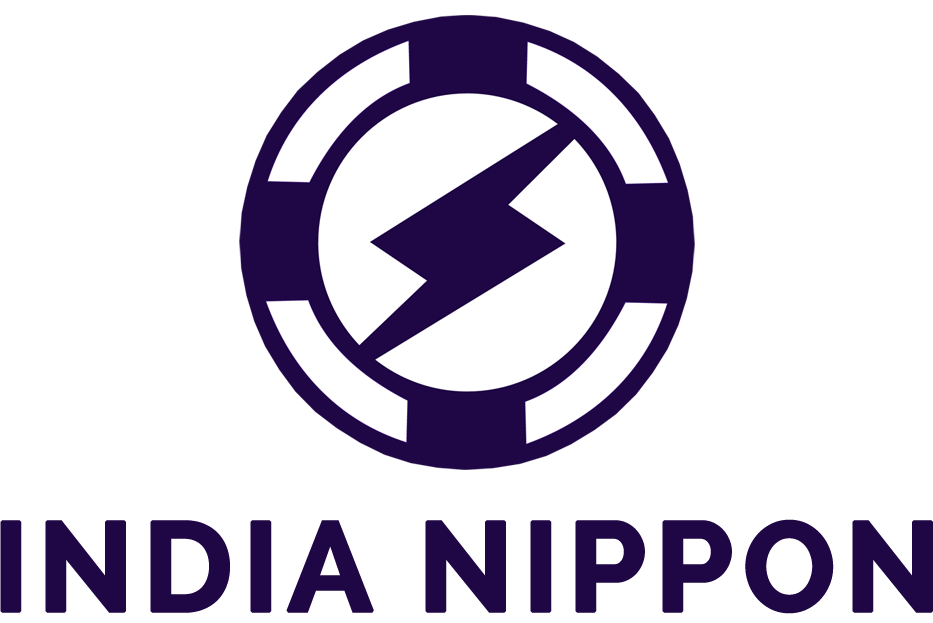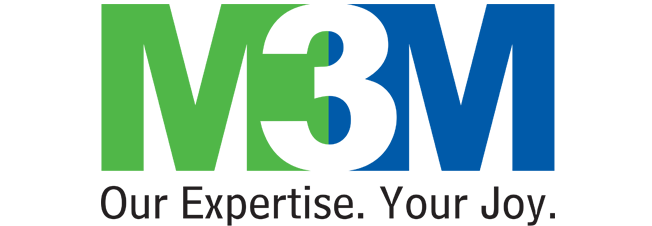Nyla Uddin • December 2, 2025
Sustainable procurement: Definitions, benefits, and best practices

Last update: October 28, 2025
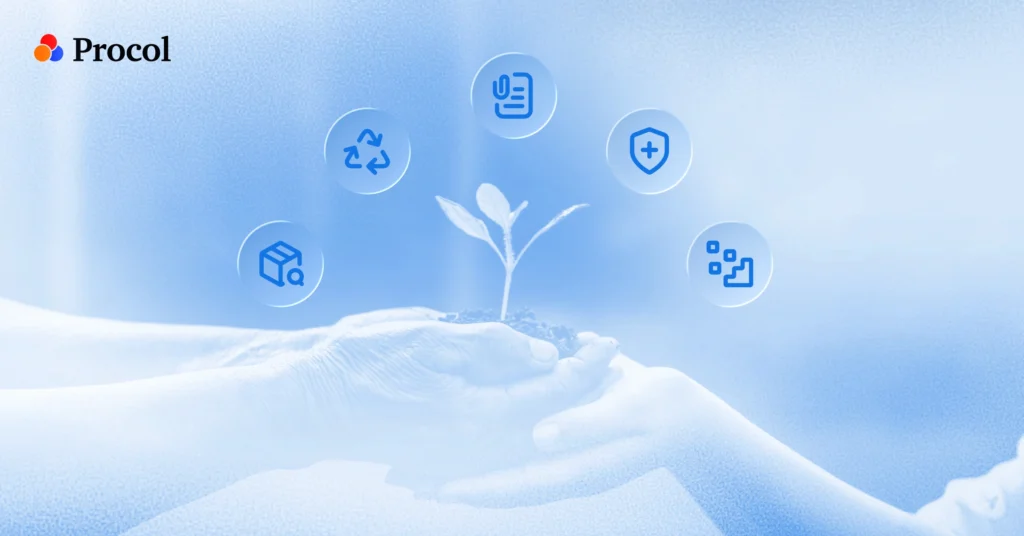
In this modern business era, organizations face challenges such as increasing environmental and social concerns. Adopting market standards, they must integrate sustainability into all aspects of their operations. Now, here comes sustainable procurement, which plays a vital role. This particular method involves purchasing goods and services at the best price while supporting environmental, social, and economic goals, thereby reducing negative impacts, supporting positive outcomes, and meeting the needs of all stakeholders.
From this, you will learn about sustainable procurement and how companies can reduce their environmental impact, stay compliant, and build a greener supply chain.
What is sustainable procurement?
Sustainable procurement is the process of purchasing goods and services that consider environmental, social, governance, and economic impacts beyond price and quality. It enables organizations to make informed decisions that support long-term sustainability. It focuses on choosing suppliers and products that protect the environment and support fair trade in the long term. This approach enables organisations to make informed purchasing decisions that benefit society, while still meeting the needs. By integrating sustainability into their procurement practices, companies contribute to a greener economy.

Why choose sustainable procurement?
Sustainable procurement delivers measurable benefits by advancing environmental and social goals while strengthening financial performance and brand value. It goes beyond compliance and serves as a strategic approach to building future-ready businesses. By reducing waste and environmental harm through eco-friendly sourcing, organizations can lower their carbon footprint and conserve resources. Compliance with regulations such as the CSRD ensures alignment with global standards, while a strong, sustainable procurement strategy contributes to the UN sustainable development goals.
At the same time, sustainable procurement practices protect reputation by demonstrating ethical operations, build resilience against risks like resource shortages or supply chain disruptions, and promote human rights by eliminating practices such as child or forced labor. When supported by a sustainable procurement plan, this approach creates long-term value, enhances trust with stakeholders, and helps organizations make a meaningful positive impact on both society and the planet.
The three pillars of sustainable procurement
Sustainable procurement is built on three key pillars: environmental, social, and economic, which help organizations to balance business goals with their responsibility towards people and the planet.
1. Environmental
Focuses on reducing emissions, adopting renewable energy, improving efficiency, minimising waste, and using renewable materials.
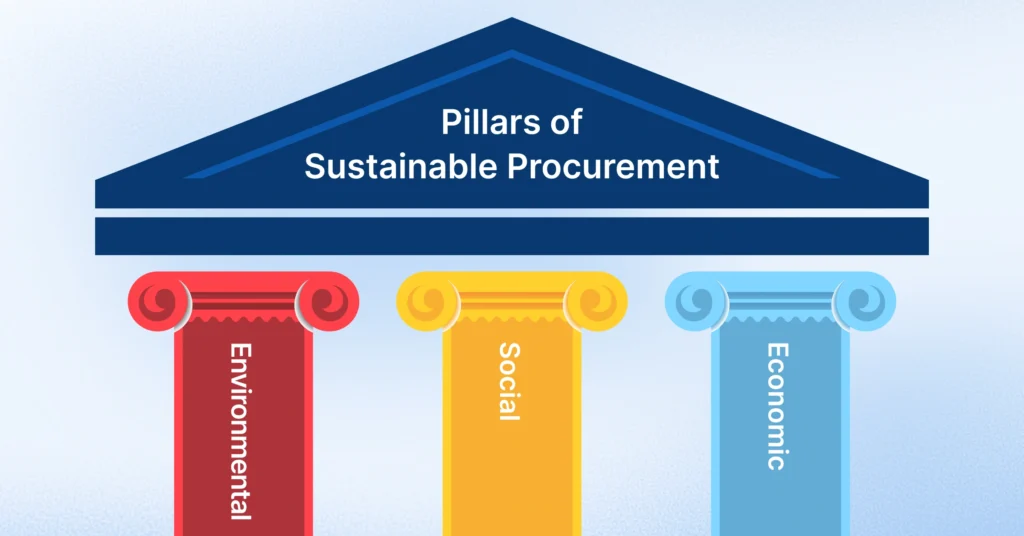
2. Social
Ensures fair labor standards, human rights protection, variety promotion, and community well-being, while also building trust and responsibility throughout all supply chains.
3. Economic
Long-term economic growth is driven by advances in sustainable procurement plans, local sourcing, support for SMEs, and cost efficiency through low total cost of ownership.
Together, these three pillars combine sustainability into procurement decisions, ensuring that purchasing is not only profitable but also ethical and environmentally responsible.
Procurement’s growing role in ensuring sustainability
Procurement strategy now plays a significant role in driving sustainability, as it has a direct impact on the supply chain. Procurement supports compliance and transparency by partnering with suppliers, choosing eco-friendly products, and encouraging fair labor practices. Sustainable procurement practices also include setting clear standards, auditing performance, and training teams.
Teams can also reduce waste by improving demand planning, conducting lifecycle assessments, and implementing more sustainable logistics. Procurement leaders facilitate this by encouraging cross-departmental collaboration and tracking sustainability progress with clear KPIs.
What are the benefits of sustainable procurement?
When implementing sustainable procurement tools, businesses consider the benefits from both the short and the long term, which is actually beneficial for organisations. Some notable benefits of sustainable procurement include:
1. Market Differentiation
Builds a stronger reputation and enhances ESG scores. Adopting CSR policies or sustainable sourcing not only improves brand value and customer trust but also helps companies stand out in competitive markets. Businesses that lead in sustainability often become the preferred choice for eco-conscious customers and investors.
2. Revenue Growth
Sustainable sourcing lowers the costs in both the short and long term by partnering with local suppliers, which reduces material costs and helps lower emissions. It also opens new opportunities in green markets, enabling businesses to attract customers who are willing to pay a premium for sustainable products and services.
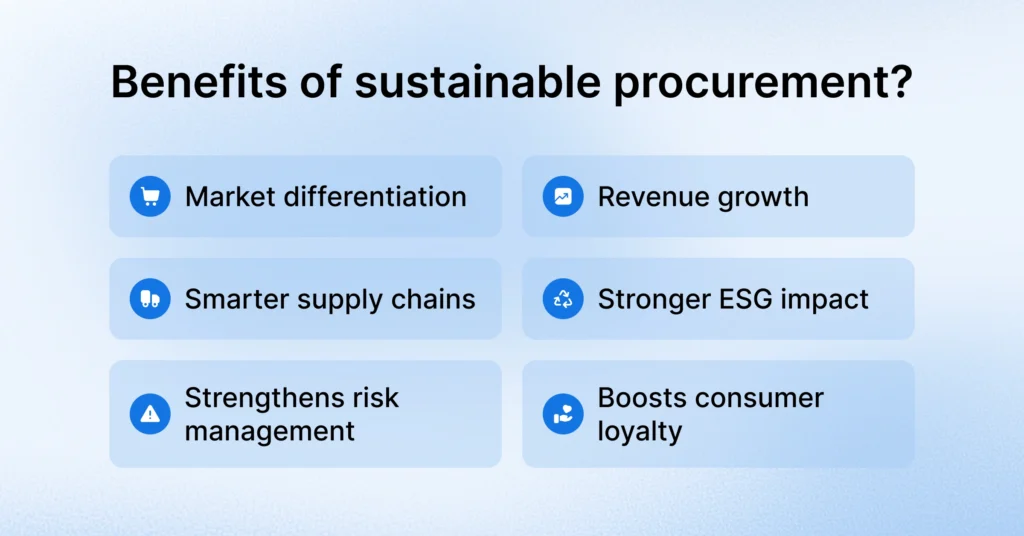
3. Smarter Supply Chains
Data-driven insights, such as energy use and scope three emissions, enhance planning and forecasting. It helps audit suppliers, track performance, and avoid supply chain disruptions caused by environmental or compliance risks. Over time, this builds resilience and transparency across the supply chain.
4. Stronger ESG Impact
This method helps the environment by reducing waste and saving resources. On a social scale, it ensures fair labor, diversity, and compliance with regulations, strengthening community impact. Companies that commit to stronger ESG practices also find it easier to meet regulatory requirements and build stakeholder confidence.
How to implement sustainable procurement
A sustainable procurement platform refers to the process of purchasing goods and services in a manner that considers their cost, environmental, social, and ethical impacts. It helps companies reduce risks and build long-term value.
Here’s how businesses can embed sustainability into their procurement processes:
1. Review current practices
Assess the organisation’s procurement strategy process and ESG initiatives to set a baseline. Standards like ISO 20400:17 can guide this analysis in a good way.
2. Track ESG progress
Utilizing global frameworks, such as the CSRD, GRI, and SASB, to track progress and assess environmental, social, and governance (ESG) metrics.
3. Engage and audit suppliers
Work with suppliers and partners to align on sustainability goals. Request ESG data directly or from third-party providers, such as Bloomberg or S&P Global Ratings.
4. Improve operations
To get a good balance between efficiency and sustainability, consider adopting green procurement such as recycling materials, conserving water, and transitioning to renewable energy sources.
Requirements of sustainable procurements in 2025
In 2025, procurement and sustainability are no longer optional; it’s a key business requirement. Companies must align their purchasing practices with ESG goals, regulations, and ethical standards to remain competitive and sustainable.
Here’s a simplified version of sustainable procurement in 2025, below you can find it:
| Reuirements | Why it matters |
|---|---|
| Leadership Commitment | Shows sustainability is a top priority and drives action. |
| Stakeholder Engagement | Aligns suppliers, employees, and customers with goals. |
| Procurement Policy | Embeds sustainability rules into sourcing decisions. |
| Supplier ESG Evaluation | Ensures only responsible suppliers are chosen. |
| Supplier Performance Monitoring | Keeps suppliers accountable to sustainability standards. |
| Training & Awareness Programs | Builds team skills to apply sustainable practices. |
| Sustainability Reporting & Communication | Proves transparency and builds stakeholder trust. |
5 best practices for implementing sustainable procurement strategies
Sustainable procurement must address both internal and external factors, as inefficiencies can occur in either context. Tackling these challenges calls for a practical, hands-on approach with clear best practices. Here’s a glimpse of those practices:
Integrate Sustainability into Procurement
Add environmental and social criteria to every step of the procurement transformation process. Update supplier evaluations, create clear policies, and use tools that track and report sustainability performance.
Create Incentives
Reward procurement teams for making sustainable choices. Offer benefits like cost-sharing for green initiatives or discounts on eco-friendly bulk purchases.
Encourage Collaboration
Collaborate with industry partners to establish shared standards and exchange best practices. Engage employees, customers, and investors to foster broader support for sustainability goals.
Ensure Transparency
Ask suppliers to share details of their sustainability practices. Publish regular reports and use third-party audits to confirm compliance.
Set and Track Goals
Define clear, measurable targets (SMART goals) and track progress with KPIs to ensure continuous improvement.
Challenges in Implementing Sustainable Procurement Solutions
Sustainable procurement faces common challenges, including fraud and hidden supplier risks, which can actually impact an organization’s performance and decrease its value. To address these kinds of challenges & new rules, you have to check the following points:
Fraud and Hidden Supplier Risks
Unethical practices and undisclosed risks can harm performance and brand trust. Organizations must strengthen supplier due diligence.
Regulatory Compliance
New rules like the EU CSRD, US SEC climate disclosure, and Germany’s Supply Chain Due Diligence Act demand greater transparency and accountability.
Supply Chain Visibility
Limited visibility creates blind spots. Data-driven tools help track supplier activities and ensure ethical practices across the chain.
Supplier Transparency
Building open and honest relationships with suppliers ensures compliance with sustainable purchasing and long-term collaboration.
Clear ESG Criteria
Setting measurable sustainability requirements helps guide purchasing decisions and aligns with company values.
Audits and Verification
Regular supplier audits confirm compliance, reduce risks, and ensure sustainable practices are consistently followed.
Employee Training
Educating teams fosters a culture of sustainability and enables procurement staff to identify and mitigate ESG risks.
How does Procol assist organizations in implementing sustainable procurement practices?
Procol helps organizations make procurement more sustainable by bringing visibility, compliance, and efficiency into one platform. It enables businesses to track their ESG progress using analytics and reporting aligned with global frameworks, such as the CSRD and GRI. Companies can also evaluate and monitor suppliers with sustainability scorecards, ensuring that only responsible partners are chosen. Additionally, this platform enhances transparency through real-time supplier performance monitoring, third-party audit support, and clear, data-driven insights.
It also helps optimize sourcing by identifying cost-saving opportunities that reduce waste and improve supply chain resilience. With stronger collaboration tools for teams and suppliers, Procol makes sustainable procurement both practical and scalable.
Conclusion
Sustainable procurement has become a business necessity, not a choice. Principles such as ESG, building strong supplier partnerships, and ensuring compliance enable organizations to lower their risks, protect their reputation, and generate long-term value. Sustainable public procurement enables competitive performance while shaping a resilient and responsible future that benefits people, the planet, and profits. Now, it’s time to start building a supply chain that’s fairer, greener, and stronger because the future of procurement is sustainable.

Frequently asked questions
What is ESG in procurement?
ESG in procurement refers to environmental, social, and governance considerations. This framework enables investors to assess an organization’s environmental impact.
How does sustainable procurement benefit businesses?
Sustainable procurement reduces risks, lowers long-term costs, attracts conscious customers, improves ESG scores, and builds resilience in supply chains.
What are sustainable procurement examples?
Examples of this type of procurement include purchasing recycled or eco-friendly materials, sourcing products from local suppliers, selecting vendors with fair labor practices, minimizing packaging waste, and utilizing energy-efficient products.
How do we measure success in sustainable procurement?
We measure through KPIs such as percentage of spend with sustainable suppliers, reduction in carbon emissions, compliance rate with sustainability standards, and stakeholder satisfaction.
Can small businesses adopt sustainable procurement?
Yes, small businesses can adopt this procedure. Even small steps, such as sourcing locally, reducing waste, or partnering with responsible suppliers, can make a real impact.
What are the 7 pillars of sustainable procurement?
The 7 pillars of sustainable procurement are environmental responsibility, social equity and inclusivity, economic viability, supplier relationships, ethical and transparent governance, innovation, risk management, and resilience.
What are the 5 R’s of sustainable procurement?
The 5Rs of sustainability procurement are reduce, reuse, recycle, rethink, and repair.
Schedule a Demo
We’d love to hear from you. Please give us a call on +1 (209) 305-4922.
Explore more from Procol
Discover expert tips, how-to guides, industry insights, and the latest procurement trends.
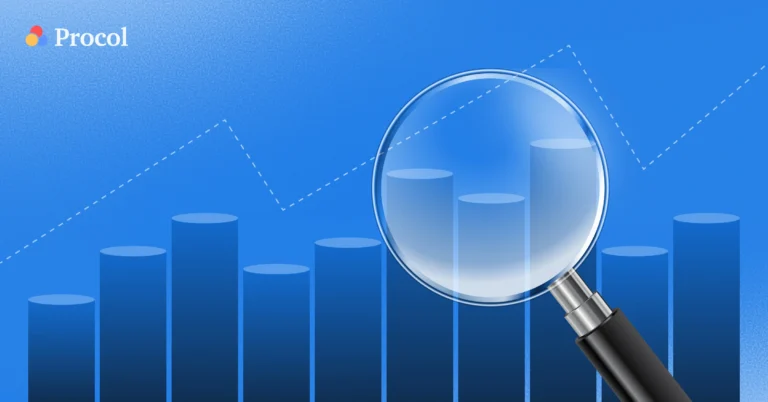
The complete guide to spend analysis in procurement | Procol
In today’s business environment, understanding where your money goes is just...
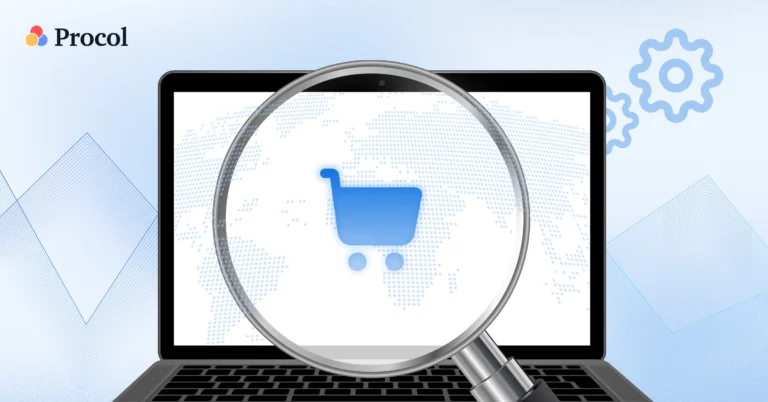
eSourcing strategy: Maximizing savings & efficiency in procurement
The procurement function is a central pillar of success, continuously managing...
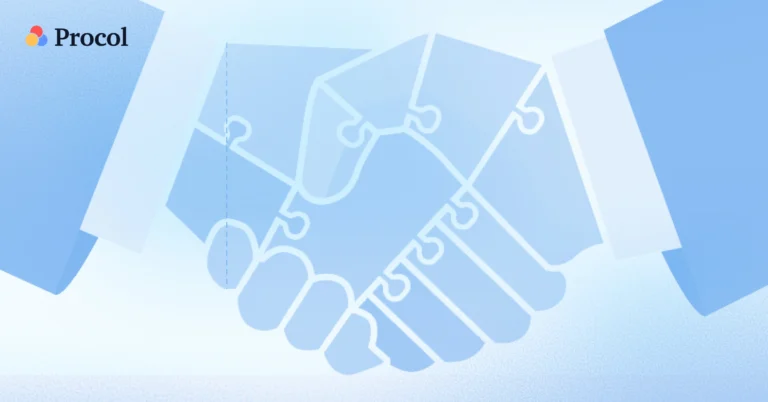
Supplier relationship management strategies : The complete guide
In today’s complex business environment, successful operations depend heavily on strong,...

